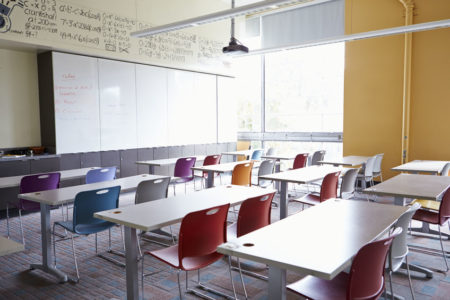As kids begin returning to the classroom, the question at the front of our minds is: how do we make the classroom healthier for our kids? While our first concern is obviously to protect our kids from diseases such as COVID-19, it also brings up the question of other health concerns—specifically, ergonomics.
Kids spend the majority of their time in school sitting, and this prolonged sedentary lifestyle can adversely affect their health. Introducing ergonomics in the classroom is just one way we can make school healthier for our kids.
How ergonomics affects learning
Does the way our children sit affect their learning? Indeed, it does. Research has shown that poor ergonomics can lead to poor cognitive development. If children are not comfortable, they will have trouble paying attention and remembering the lesson plan. Plus, even the way we sit can impact our attention. If we’re slouching in our chairs, we’re less likely to pay attention to what’s happening in front of us than if we’re sitting upright and alert.
Improving ergonomics in the classroom
So, how do you go about creating an ergonomic-friendly environment in your classroom? Here are a few steps to get you started:
Step 1: Schedule an ergonomic evaluation
Most people know that their current set-up isn’t working, but they don’t know how to fix it. That’s where ergonomic evaluations come in. These assessments can determine where and how you can improve your classroom environment to create a more productive learning experience.
Step 2: Find the right equipment
An ergonomic evaluation will also help you find the right equipment. When it comes to classrooms, the desks and chairs are the most important. Desks and chairs should be adjustable, that way students are always sitting in a desk that fits them. You can tell if a desk fits a student by looking for the following features:
- The seat’s backrest fully supports the spine
- The desk is high enough where elbows rest at an angle just above 90 degrees when the arms are lying on the desk
- The chair is high enough where the knees rest against the front edge and the feet lay flat on the floor
Step 3: Get up and move
Ergonomics doesn’t just stop at the equipment. For a healthy lifestyle, children should be up and moving frequently, not tied to a desk all day. Consider introducing stretches into your schedule or have activities that encourage kids to get up and walk around the classroom.
At Accredited Rehabilitation Consultants, our ergonomic evaluations can help you create a healthy and proactive learning environment in your classroom. To learn more, contact us today!

